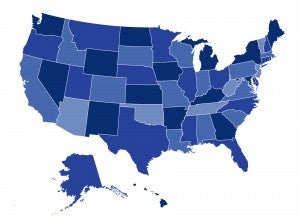
In June, the U.S. Department of Labor issued a final regulation that implements President Trump’s executive order encouraging the expansion of association health plans (AHPs) for small businesses and self-employed individuals. Under these rules, professional or trade associations will be permitted to sell health plans that are exempt from many Affordable Care Act (ACA) protections as early as September 1, 2018.
However, 12 attorneys general have now sued to enjoin the rule, noting that AHPs have a long history of fraud and insolvency, and in some places have undermined states’ individual and small-group markets. While this litigation works its way through the federal courts, state insurance departments can’t ignore the daunting and complex task of determining how they will regulate these entities in a way that is best for small employers, the self-employed, and health insurance markets.
To better understand state decisions with regard to AHP regulation, faculty with the Georgetown University Center on Health Insurance Reforms interviewed state insurance regulators in six states. In our latest To the Point post for the Commonwealth Fund, we found that the impact of the AHP final regulation will vary, largely depending on each state’s existing law and overall regulatory stance regarding the benefits and risks of these arrangements. States that choose not to proactively regulate AHPs could find a history of AHP scams, insolvencies and market segmentation, repeating itself. To learn more, you can read the full post here.

